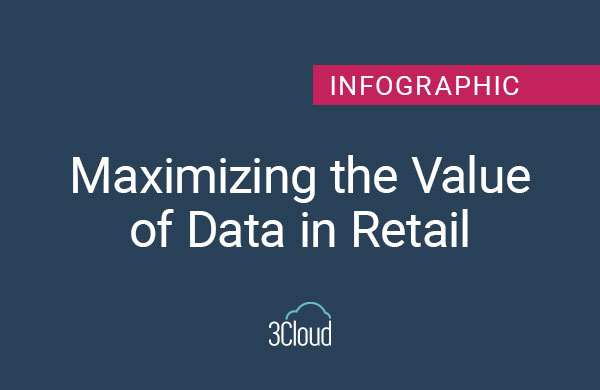Taking your organization’s data to the next level requires experimentation and innovation. Data platforms are notoriously slow to innovate, with legacy software running on nearly forgotten technology. Instead of continuing to do things the same way you have for the last decade, you need to innovate to push your organization’s digital transformation ahead at a pace that keeps up with your competitors – and you need to innovate fast.

In describing the pace of change during the course of the COVID-19 pandemic, Microsoft CEO Satya Nadella gives a great example of how quickly things are moving saying, “We’ve seen two years’ worth of digital transformation in two months.” Likewise, as the pace of data creation accelerates, so does the pace at which companies need to leverage data to transform their business.
To drive digital change in your organization, particularly in the data analytics space, you need to make proofs of concept (POC) a regular habit.
As lightweight, small-scale experiments, POC offer several key strategic and technological advantages for your organization.
Why Launch a Data Analytics POC?
Identify Opportunities, Eliminate Pain Points
Just thinking about a POC requires your team to reflect on pain points within your existing solution. Legacy systems can lack features or scale to handle current data demands. Processes might require manual intervention to bridge gaps in the existing solution. Data has scaled in recent years, causing ETL run times to balloon to an untenable and expensive size. Further, optimizing and scaling on-premises infrastructure is a long journey of purchasing, upgrading, configuring, and maintaining on-premises hardware. Surfacing these needs and opportunities can help teams rethink the status quo.
Unlock New Possibilities
You won’t know until you try. Running a proof of concept can help your department or team free up resources or tap into new potential. By eliminating pain points, it is possible to repurpose hours of time or budget space.
Incorporating new data into your platform, accessing larger data volumes, or utilizing a different tool set can spark ideas for new patterns, processes, and analytical queries.
Develop an Innovative, Nimble Culture
The POC process requires teams to break out of calcified thinking and get comfortable with designing and running experiments, as well as learning from failed experiments. This can substantially impact data analytics initiatives and spur a culture of innovation – in turn driving benefits across the organization.
In this video, I’ll demonstrate how simple it can be to implement Data Analytics Proof of Concept using Power BI.
Planning a POC
1. Identify Pain Points
At first glance, it might seem easy to identify pain points in the data platform or analytics solution. However, it is common for teams, after years of working with the existing solution, to find themselves numb to the pain. Without regular experimentation or exposure to potentially new ways of doing things, it is hard to see a gap in the process, a bottleneck causing delays, or missing data.
A regular rhythm of experimentation will create a culture where teams are acutely aware of pain points and quickly begin to think about potential options to eliminate them.
2. Gather Your Team
A POC can fail by having too few people involved or too many. Pick your team wisely. At the very least you need engagement from technical, business, and executive stakeholders. If you get beyond a team of 10 people, hold up. A crowded room can bog down what is designed to be a nimble process. Recruiting these team members to participate in your POC requires three things defined upfront:
- A clear outline of pain points or opportunities that might come from this initiative.
Example: Analysis is currently limited to internal data. Incorporating third-party demographic data can enhance future analysis. - The length of the POC.
Example: 3 weeks - The number of hours required by everyone.
Example:- Executive Sponsor: 3 hours (progress meeting each week)
- IT Partners: 8 hours
- Business Analysts: 8 hours
3. Getting Executive Sponsor Buy-In
If everything goes according to plan with the POC, the natural next step is to expand beyond the initial narrow scope. However, to move forward with a production implementation, you will need a budget and backing from an executive sponsor. Depending on the nature of the POC, this executive could be from the business or IT side. However, they must be a part of the team you gather so they can see progress and understand the value.
The clearest path to getting buy-in from an executive is to have mutually agreed upon and clear success criteria that are measurable at the end of the proof of concept. Ideally, after the work is complete, the entire team – including the executive sponsor – is clear on what was successful. If the POC is successful, the executive sponsor can confidently put the budget and support behind a full production implementation as the POC demonstrated success and highlighted pitfalls to avoid.
4. Define Success
With an executive sponsor on board, your team can now define what success looks like. Sample success criteria might be:
- Decrease ETL workload times from X to Y.
- Expand analytical potential between X and Y through the addition of the new data.
- Satisfy user base demonstrated by X score on user surveys.
Getting specific about the criteria required for success is a huge factor in determining if this POC will get off the ground beyond its initial scope, or whether future proof of concepts stand a chance. Gathering a team comprising members from different areas of the organization (IT, Business, etc.) aids in defining well-rounded success criteria that speak to the interest of each stakeholder.
5. Establish a Testing Plan
With clear success criteria defined, it is now time to reverse engineer a testing plan:
- How many ETL runs and at what time of day do we need to establish a baseline runtime?
- What metrics or functionality do we need to implement to demonstrate expanded analytics?
- How many users do we need to collect feedback from? How will we survey the users?
For each success benchmark, you need a clear testing plan that produces objective results.
6. Estimate Costs and Timeline
A rough cost estimate should have been established up front, but with success criteria and testing plan in place, it is now possible to identify cost more accurately.
Similarly, the initially proposed timeline can now be refined to include the activities and testing plan. Pro-Tip: If you can’t run the POC start to finish in under a month, consider limiting the scope to keep the project nimble.
7. Design a Roadmap
For a successful (as defined by the success criteria) POC, you want to have a clear path forward for implementing the solution at a larger scope. What are the next steps to move into production? Which business units or data sources will be implemented first?
Having a road map already in place can accelerate budget and executive buy-in following a successful POC.
Handling a Failed POC
Not all proofs of concept will strike gold. The data could be messy and unusable. The ETL workload could be far too expensive at scale. Or security requirements might limit any potential to scale. Failed POCs are not a failure, but a launching pad for future ideation and iterations.
Adopt an agile mindset, debrief with the team on what worked and what didn’t, and begin planning your next POC. 3Cloud’s expert data and analytics consultants can help steer your next proof of concept toward success. Contact us today with questions or for help.




